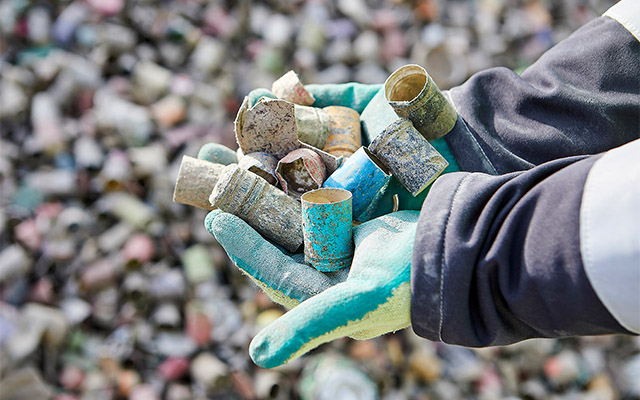Glass recycler Maltha is ready for the festive period
24 December 2021

Glass recycler Maltha, a joint-venture between Renewi and Owens-Illinois, is ready for the extra volumes of glass that are expected over the coming festive period. The glass recycler anticipates peak levels over the coming weeks with a potential rise of 20-25% in bottle material. The recycler is also calling for even better separation of glass streams because a lot of streams that don't belong with the glass often end up in there.
Over the festive period, the European market’s biggest and most innovative glass recycler will convert tonnes of glass into new secondary materials. “Recycling glass uses less energy than it does to make new glass, so it’s much better for our climate, but for that the glass must be very clean. And the latter sometimes leaves a lot to be desired. Corks, mirrors, vases, caps... there are a lot of things that have to be screened out of the glass pile”, says Huco Knape, Maltha’s Commercial Director.
The difference between glass types
“Around this time, a lot of drinking glasses, which are made from crystal, also disappear in the glass recycling container and that is absolutely not allowed. Although it is glass, it is made from a different material nonetheless.
Crystal can contain lead and that must not end up in the new, recycled, glass. Heat-resistant glass, such as oven dishes, is also not permitted. This creates problems for recycling because heat-resistant glass has a higher melting temperature and therefore doesn't melt away at a normal glass-furnace temperature”, Huco Knape explains.
No pottery, stone or porcelain
“Another big challenge for Maltha is to filter pottery, stone and porcelain out of the glass fragments”, says Knape. “Fragments of crockery for example, don't melt in the glass-factory furnace. If new bottles were then made from that, the glass could break because there would be weak points in the bottle.”
Tops and caps can go into the glass recycling container because they are easy to recognise and remove using advanced separator machines and techniques.
100% recyclable
Glass is the perfect raw material for new glass. It lasts for ever and is 100% recyclable, with no loss of quality. Waste glass is a typical example of the circular economy and proof that waste really does not need to exist.
Maltha has existed for 100 years already, and its ambition is to convert all incoming glass into secondary raw materials and thus stimulate the circular economy, but cooperation is also important for this. The consumer is part of stimulating the circular economy too because separation at source is vital. 85 percent of all glass is now returned via glass recycling containers. It is therefore important to separate glass correctly because this makes a considerable contribution to a better recycling process.

